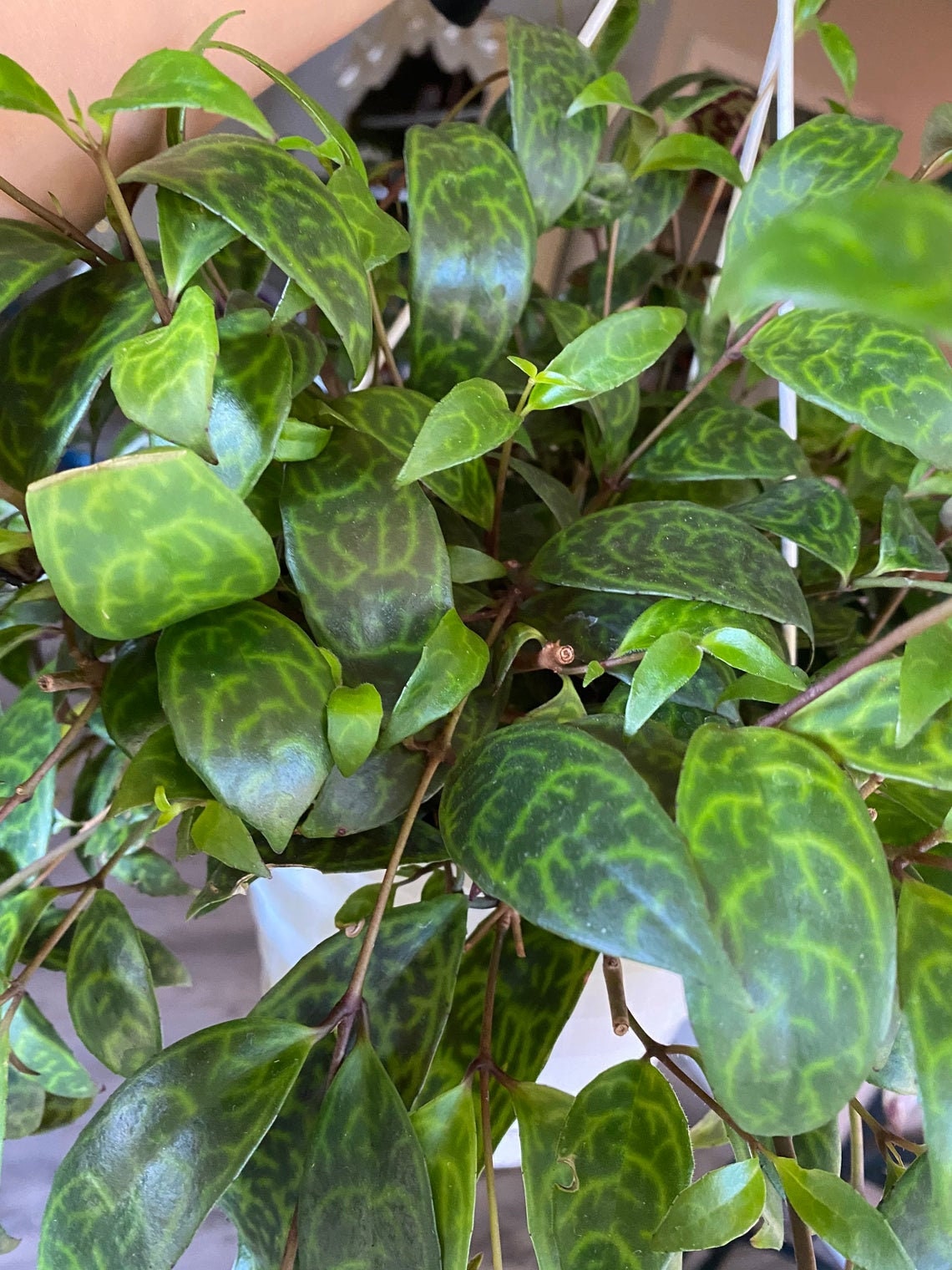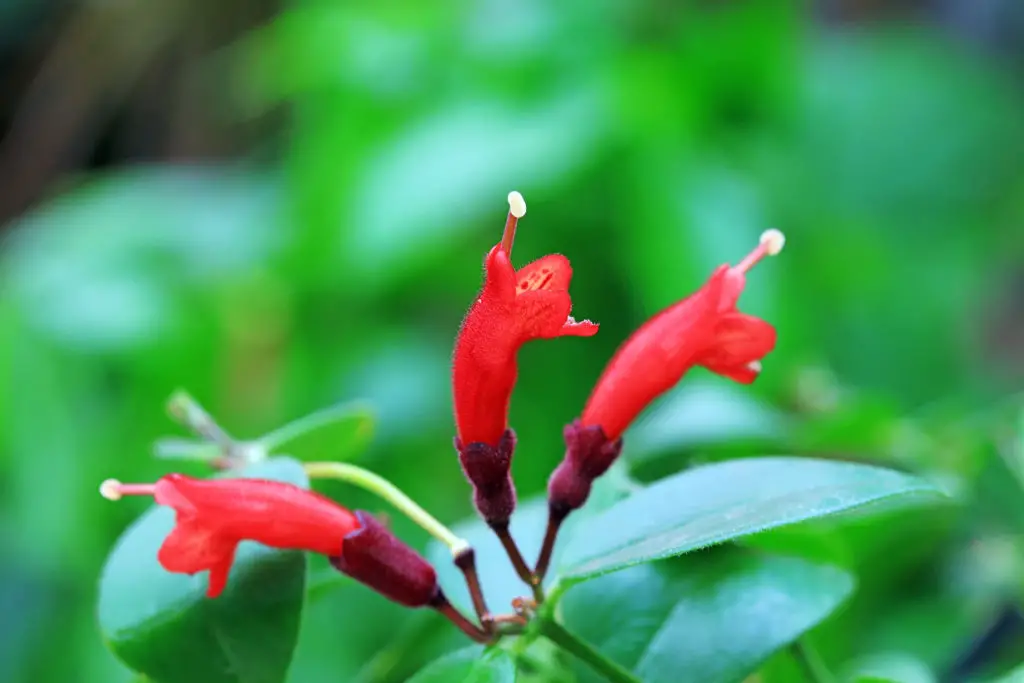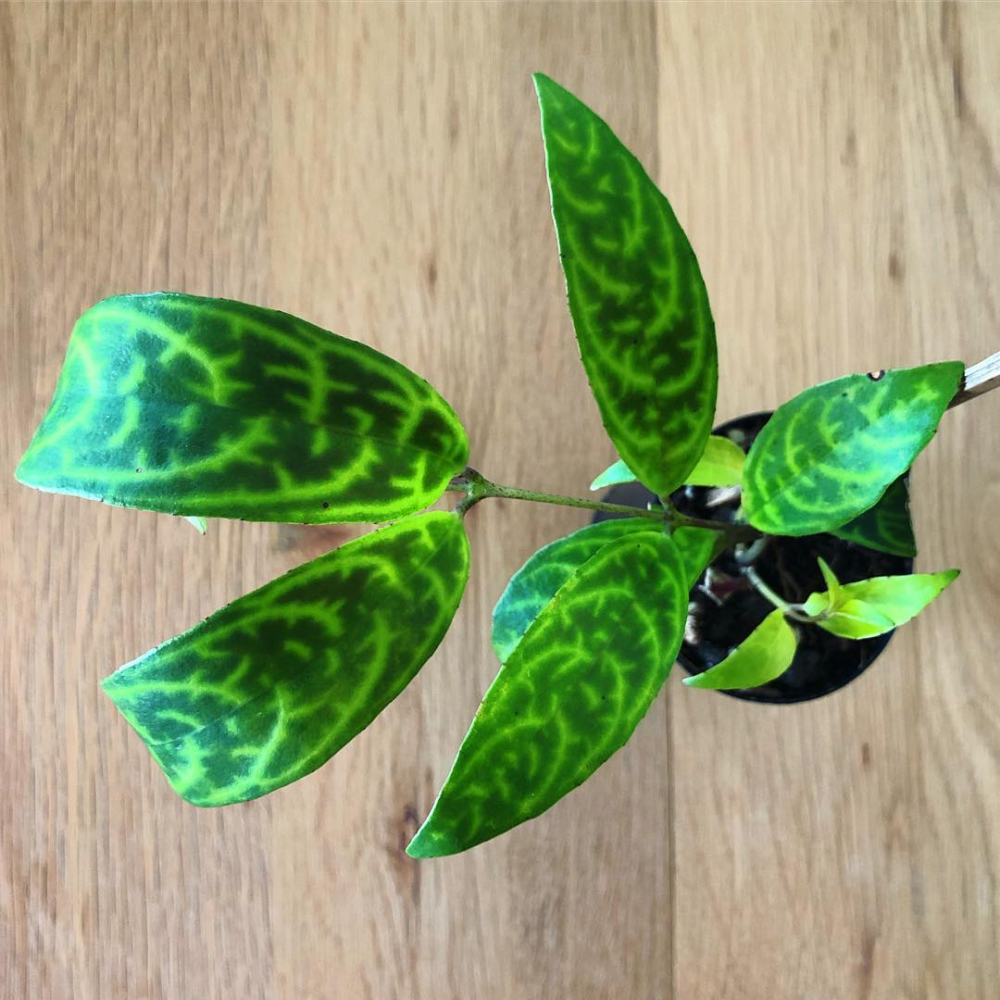Black Pagoda Lipstick Plant How to Care for this Unique Plant AroidWiki

black pagoda lipstick plant Care & Growing Guide All you need to know
This is your complete care guide to grow and care for your Black Pagoda Lipstick Plant (Aeschynanthus longicaulis) We'll go over lighting, watering, propagat.

Trailing Houseplant Black Pagoda Lipstick Plant a Friendly Gardener
What Does a Black Pagoda Lipstick Plant Look Like? The lipstick plant appears to be a Hoya, but it is a variety of Aeschynanthus lipstick vine. It looks delicate but is a low-maintenance lipstick plant relative (Aeschynanthus radicans).

Black Pagoda Lipstick Plant How to Care for this Unique Plant AroidWiki
Aeschynanthus 'Black Pagoda' is a type of lipstick plant native to tropical regions of SE Asia. It's an epiphyte that can absorb water and nutrients from the surfaces and air around it. Unlike the more common variety, this one has flexible, trailing green stems that brown and stiffen with maturity.

Black Pagoda Lipstick Plant 4 to 6 Tall Ship in 3 Pot
Lipstick Plant 'Black Pagoda' is a perfect beginner houseplant since it's easy to care for. It tolerates dryness with ease, and is able to thrive in low to medium light. The Black Pagoda is excellent for hanging baskets with its beautiful, cascading growth habit. It features mottled dark-green foliage and bright orange flowers.

Black Pagoda Plant, Grow & Care Guide 2022
A black pagoda lipstick plant makes an excellent basket plant as the vine has pointed and waxy leaves, and its flowers peek out from a lipstick tube-like maroon bud.. Black pagoda lipstick plants demand a proper care and nourishment routine, which can help the scraggly plant grow into a more mature and attractive form.. The black pagoda lipstick plant, also sometimes referred to as the Zebra.

Aeschynanthus longicaulis 'Black Pagoda', Lipstick Plant 'Black Pagoda' in GardenTags plant
The Black Pagoda Lipstick Plant (Aeschynanthus radicans 'Black Pagoda') is an attractive trailing vine with tubular red, orange, or yellow flowers. It's ideal for indoor hanging baskets or containers and is relatively low-maintenance. This comprehensive table includes essential details and meets your requested criteria for all future queries.

Black Pagoda Lipstick Plant How to Care for this Unique Plant AroidWiki
Black pagoda lipstick plants have stems that can trail, climb, or overhang. They are tiny in comparison to other Aeschynanthus species, with lengths between 1.6 and 3.3 ft (0.5 to 1 m). However, they create a gorgeous display of 2 inches (5 cm) long flowers in the summer and fall that is breathtaking.

Aeschynanthus longicaulis 'Black Pagoda', Lipstick Plant 'Black Pagoda' in GardenTags plant
Black Pagoda Lipstick plant is a variety of lipstick plant with dark green leaves with creamy mottling and purple undersides, native to tropical regions of South East Asia. It's a medium-sized plant with cascading vines. Black Pagoda Lipstick Plant is also known as the Zebra Basket Vine plant, since the color pattern resembles zebra stripes.

Lipstick Plant ‘Black Pagoda’ (Aeschynanthus longicaulis) Lipstick plant, Plants, Plant sale
October 24, 2022 Last Updated on January 5, 2023 by a Friendly Gardener Also known as the Zebra Basket Vine, the Black Pagoda Lipstick Plant ( Aeschynanthus longicaulis) is a gorgeous trailing plant with stunning shiny green leaves and striped purple-colored variegations.

Aeschynanthus longicaulis 'Black Pagoda', Lipstick Plant 'Black Pagoda' in GardenTags plant
The Black Pagoda may look like a Hoya, but it is actually a variety of lipstick plant. Aeschynanthus longicaulis is also commonly known as the Black Pagoda or Zebra Basket Vine. It is an excellent houseplant as it tolerates lower light and dryness. It is perfect to grow indoors and in hanging baskets.

aeschynanthus / lipstick black pagoda Plant Shop Seattle
The Black Pagoda Lipstick Plant, scientifically known as aeschynanthus longicaulis 'Black Pagoda,' is a stunning and exotic houseplant that will add a touch of elegance to any indoor space. With its dark, glossy leaves and, if you are lucky, vibrant orange-red tubular flowers, this is a perfect houseplant made to impress.

Aeschynanthus ‘Black Pagoda’ Gesneriad Reference Web
With the ability to reach a staggering height of three feet, the Black pagoda lipstick plant is an ideal choice for those looking to add something special and full of life to their garden. Because it doesn't require much room, this fast-growing plant is perfect in a hanging basket or on a trellis - any structure that can support its growth will do!

Aeschynanthus Longicaulis Black Pagoda Plant 120mm Sydney and Wollongong Only The Jungle
The Black Pagoda Lipstick Plant (Aeschynanthus radicans) is a stunning specimen among the many rare plants that can be found in the wild. In this detailed tutorial, we'll learn everything about the fascinating Black Pagoda Lipstick Plant, from where it came from to the best ways to take care of it and spread its seeds.

Lipstick 'Black Pagoda' Indoor Plant Tropical Plant Potted Plant — House Plant Shop
The Black Pagoda Lipstick Plant is an epiphyte, meaning it grows on other plants or trees without harming them. In nature, it uses its roots to attach itself to branches and rocks. Table of Contents Black Pagoda Lipstick Plant Flower Encouraging Blooming Distinctive Foliage Growing Conditions Light Requirements Temperature and Humidity

Aeschynanthus longicaulis 'Black Pagoda', Lipstick Plant 'Black Pagoda' in GardenTags plant
The Black Pagoda lipstick plant is a delightful hanging houseplant with dazzling foliage. This post shares all you want to know to make your Black Pagoda lipstick plant flourish. Putting a Black Pagoda in a container with free, properly draining soil and adding water when the soil is dry is crucial for its care.

Aeschynanthus Black Pagoda Dibleys
What do lipstick plants look like? Lipstick plants can grow up to 5 ft. (1.5 m) tall in the wild. As an indoor hanging basket plant, the lipstick plant can grow to between 2 and 3 ft. (60 - 90 cm) long. The stems are trailing, and regular pruning can help keep its size manageable and create a bushy appearance.